SECTION 2: TRANSPORTATION
"The farmer is the only [worker] in our economy who buys everything at retail, sells everything at wholesale, and pays the freight both ways."
-- John F. Kennedy, 1960
35th U.S. President
Grain- and silage-handling safety does not end with the harvest. Transportation, storage, and on-farm processing of grain and silage all have associated hazards. This section will concentrate on hazards and safe practices you should use while transporting grain and silage.
Grain transportation on the farm and from the farm to storage or sale varies greatly across the United States. The equipment used to move grain varies from farm tractors pulling gravity wagons to semitrailer trucks. This handbook will suggest some safety practices to observe while towing grain or silage wagons with a farm tractor, pickup truck, or grain truck. Remember that truck operation and regulations for towing farm wagons with trucks are covered by your state's department of transportation.
This section is the second part of a five-part handbook on grain- and silage-handling hazards. Each of the five sections of this handbook is meant to stand alone, so some hazards will be discussed in more than one section. If you have already read one of the other sections of this handbook, some of the material in this section may be a review for you.
Power Unit Safety
The main safety considerations of grain and silage transportation are maintaining stability and control of the truck or tractor and wagon and avoiding other traffic.
Choose a truck or tractor that is large enough to control the loaded wagon. The towing vehicle must have sufficient weight and traction to be able to slow the wagon and control it through turns. Reduce your travel speed and use extra caution if the wagon weighs more than the vehicle towing it. Don't pull wagons that are more than twice as heavy as the towing vehicle, unless the wagon has its own brakes.
Slow down gradually if the wagon starts to fishtail, weave, or bounce. Always reduce your speed for turns. Doubling your forward speed increases your chance of an overturn by about four times. Rolling the load can roll the vehicle pulling it.
If you are using a tractor to pull grain wagons, choose a tractor with a roll-over protective structure (ROPS) and wear your seat belt (Figure 2-1). If a roll or a collision does occur, you want the most protection possible. One cause of collisions and rolls is a tire blowout. Make sure that your tractor tires don't have deep cuts or cracks that could lead to a blowout and loss of control.

Figure 2-1. Choose a tractor with a ROPS and wear a seat belt when pulling grain or silage wagons. Doubling your speed increases the possibility of an overturn by about four times.
Remember to lock your tractor's individual wheel brakes together for road travel. Applying one brake too strongly can swing the tractor sideways, causing it to be rolled by the wagon. The tractor can also be forced into a spin with the brakes locked together if the brakes are not adjusted correctly. The owner's manual or your tractor dealer should be able to help you adjust the brakes to apply an equal amount of braking force when the brakes are locked together.
Sharp turns can also result in an overturn, especially if the wagon is loaded. When a sharp turn is made, the trailed equipment will try to continue in a straight line, which can jackknife and roll the tractor.
Road Safety
Try to alert motorists as far in advance as possible by keeping bright, reflective Slow Moving Vehicle (SMV) symbols on all tractors and wagons. Use warning lights when possible. Signal all turns with lights or hand motions.
To allow traffic to pass, pull off onto the shoulder and stop. Don't drive on the shoulder. The shoulder may be rough or have other handling hazards that could lead to an overturn. If your vehicle does start to tip into the shoulder, steering down into the ditch may prevent a complete overturn (Figure 2-2).
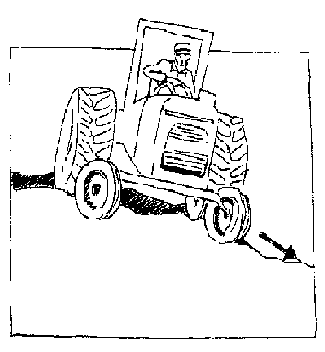
Figure 2-2. Pull onto the shoulder and stop to let traffic pass. Don't drive on the shoulder; it may contain holes or other hazards that can cause overturns. If your equipment does start to tip into the shoulder, steering down into the ditch may prevent a complete overturn.
Shift to a lower gear before going downhill. Don't take the chance of losing control by shifting to neutral or leaving the tractor or harvester in a high gear. A good rule of thumb is to go downhill in the same gear, or a lower gear, as you would use to go uphill.
Consider having an escort vehicle follow to help alert motorists. This is especially important if left-hand turns have to be made. Collisions can occur when machinery starting a left turn is hit by a car passing from behind (Figure 2-3).
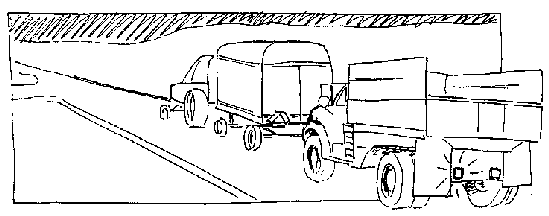
Figure 2-3. Since most wagons don't have turn signals, consider using an escort vehicle to help alert other drivers. Collisions occur when machinery starting a left turn is hit by a car passing from behind.
Wagon Safety
Loaded grain wagons will often weigh more than the tractor or pickup truck pulling them. If a heavy wagon has a tire or running gear failure, you may not be able to control the wagon with your truck or tractor, resulting in a collision or overturn. Proper adjustment and maintenance of the wagon's steering components will reduce fishtailing or weaving and the chance of component failure. Never exceed the maximum load recommended for the wagon's running gear or the tires. Use the proper tires for the running gear. As mentioned before, tires with deep cuts or cracks are blowout hazards and should be replaced.
If you are towing a wagon with a pickup or other farm truck, do not exceed the manufacturer's recommended towing speed for the wagon or the tires. Reduce your travel speed and use extra caution if the wagon weighs more than the truck.
Locking pins should be used to secure the hitch pins for all wagons (Figure 2-4). Don't take the chance that the load could become unhitched. Safety chains are also a good idea for road transport. These chains will allow you to maintain some control if the wagon should come unhitched.
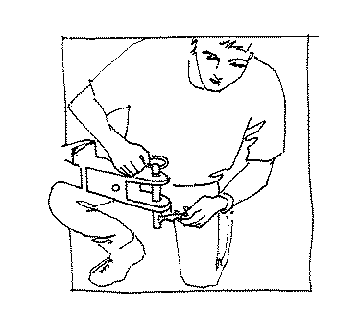
Figure 2-4. Secure all hitch pins with locking pins or clips. Consider using safety chains for road travel. Don't take the chance that the load could become unhitched.
Consider purchasing larger grain wagons equipped with brakes, especially wagons that will weigh more than the towing vehicle when loaded. Wagon brakes put the braking power for the load where the traction is, under the load. Also consider installing lighting packages on your grain wagons, particularly wagons that obstruct the lights on the pulling vehicle. Newer tractors have outlets for wagon lighting packages as standard equipment.
Hitching Wagons
The task of hitching wagons is often overlooked as a source of severe injuries and deaths. The main hazard of hitching is being caught between the tractor or truck and the wagon. Avoid moving the tractor when there is a helper between it and the wagon. Back the tractor past the hitch point with your helper at a safe distance, then inch forward, away from the wagon, to align the hitch holes. With this method, if the clutch grabs or something else should go wrong, the tractor will move away from your helper. A sliding wagon tongue can help to speed hitching and reduce hitching hazards, since exact alignment of the hitch holes can be done with the tongue rather than the tractor.
If you are hitching the wagon by yourself, make sure that the parking brake is on and that the tractor is in park or in gear with the engine off before leaving the seat. Don't try to rock the tractor or the load by hand; it may move much farther than you expect.
When you unhitch a wagon, be sure that it is on level ground. Don't pull the hitch pin if there is much force on it. The wagon may crush you against the tractor. It is a good idea to chock the wagon's wheels before unhitching, even if the ground appears to be level (Figure 2-5).
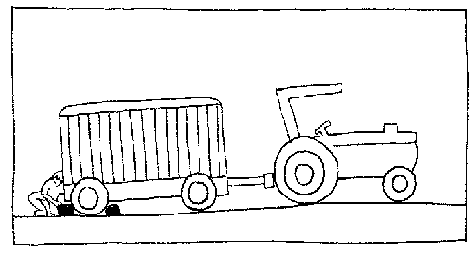
Figure 2-5. It is a good idea to chock both sides of the wagon or implement wheels before unhitching, even if the ground appears to be level.
Bulk Container Safety
Suffocation under silage or grain was the leading cause of grain- and silage-handling fatalities for the period 1985 through 1989. These suffocations take place in gravity and auger wagons and trucks, as well as grain bins or silos.
When auger or gravity wagons empty, grain flows to a point over the outlet, then down and out of the outlet. Anyone, especially a child, can be drawn into the grain flow and be buried. The flowing grain does not offer support like still grain. A person will usually sink no deeper than several inches to a foot in still grain. Flowing grain cannot develop this support. Workers can rapidly sink thigh-deep and will then be unable to free themselves. A shorter person, such as a child, will be buried more quickly. In addition, some grains, such as flax and millet, cannot support a person, even when still.
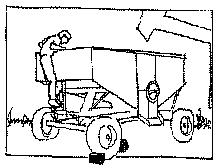
Figure 2-6. Be sure that no one is in forage or grain wagons or trucks while they are being loaded or unloaded.
People can also suffocate by being buried in a wagon or truck that is being filled. The victims in these incidents are often children.
Suffocations in forage and grain wagons or trucks can be prevented by keeping all people, especially children, out of these vehicles while they are being loaded or unloaded (Figure 2-6).
Dump Trucks and Wagons
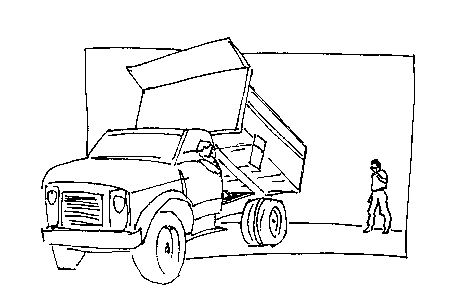
Figure 2-7. Trucks or dump wagons that are used to haul silage or grain should only be emptied on firm, level surfaces. Helpers should stand far enough away to avoid being crushed if the vehicle should overturn or if the load should dump all at once.
Trucks or dump wagons that are used to haul silage or grain should only be emptied on firm, level surfaces. Helpers should stand far enough away to avoid being crushed if the vehicle should overturn or if the load should dump all at once (Figure 2-7). As with all hydraulically raised devices, no one should work under a raised dump box unless the box has been securely blocked (Figure 2-8).
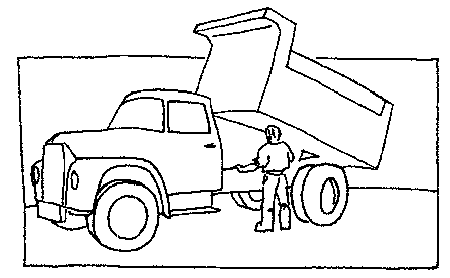
Figure 2-8. No one should work under a raised dump box unless the box has been securely blocked.
Publication #: 95-109
Disclaimer and Reproduction Information: Information in NASD does not represent NIOSH policy. Information included in NASD appears by permission of the author and/or copyright holder. More